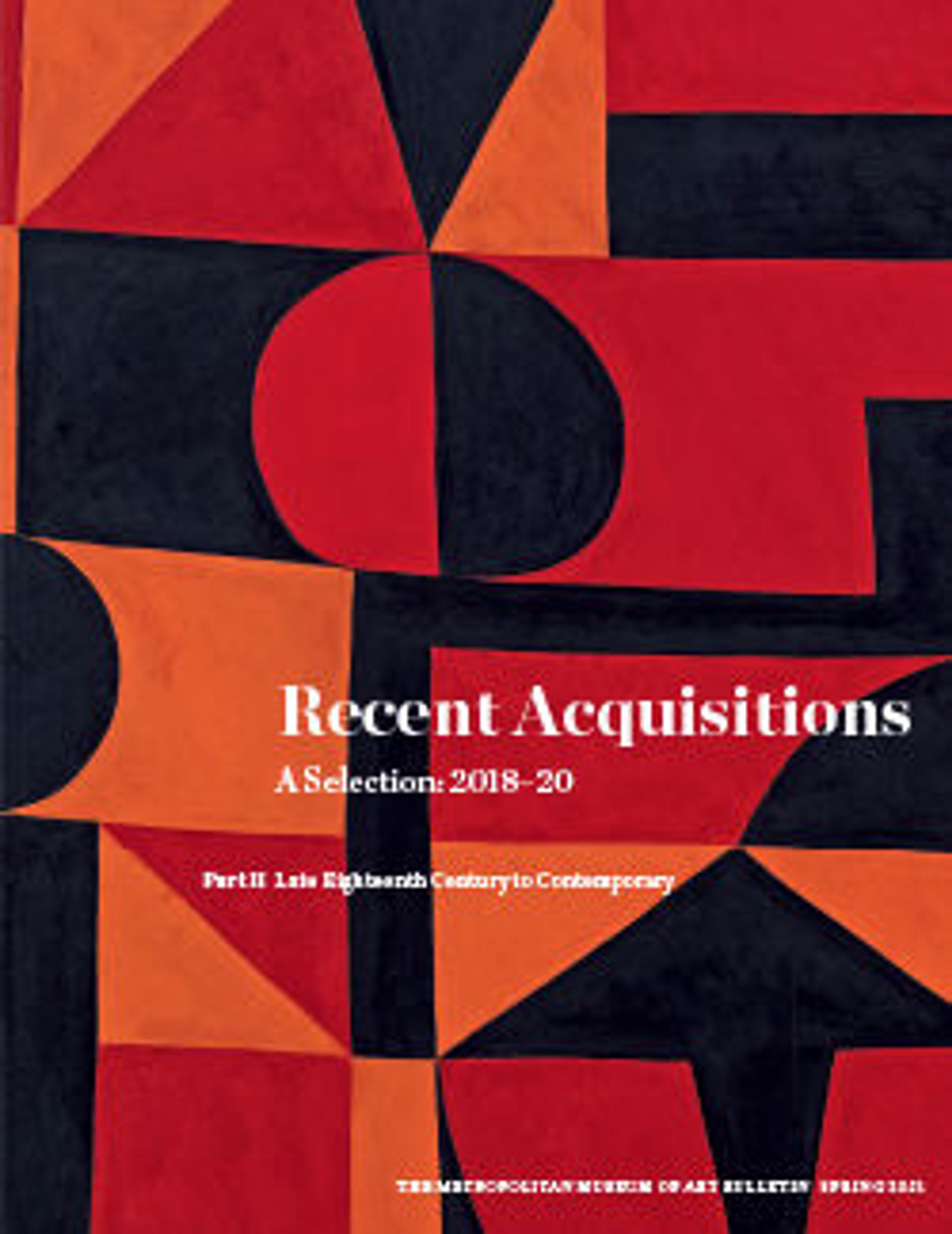The American Fleet Defeating Rais Hamdu off Cape Gata
The Arabic inscription at bottom of the painting identifies the scene as the so-called Battle of Cape Gata– a devastating blow to the Barbary forces by the American navy in the year 1815. At the center, the Algerian ship Mashudu is identifiable by its bright red flag at the stern. Nine American ships have surrounded the Algerian vessel as billowing clouds of smoke indicate the exchange of cannon fire.
When the smoke cleared, among the dead was Algerian corsair Rais Hamidu (1773–1815) a relentless pirate who was the focus of the American attack. Hamidu was targeted for his role in leading raids on American merchant vessels in the Mediterranean, and demanding ransom for their crews.
This is the first work in The Met’s collection to illustrate United States naval history by a North African artist. A related version is in the collection of the New York Historical Society.
When the smoke cleared, among the dead was Algerian corsair Rais Hamidu (1773–1815) a relentless pirate who was the focus of the American attack. Hamidu was targeted for his role in leading raids on American merchant vessels in the Mediterranean, and demanding ransom for their crews.
This is the first work in The Met’s collection to illustrate United States naval history by a North African artist. A related version is in the collection of the New York Historical Society.
Artwork Details
- Title:The American Fleet Defeating Rais Hamdu off Cape Gata
- Date:19th century
- Geography:Made in Algeria
- Medium:Ink and watercolor on paper
- Dimensions:H. 14 5/8 in. (37.1 cm)
W. 19 5/16 in. (49 cm) - Classification:Codices
- Credit Line:Purchase, Friends of Islamic Art Gifts, 2018
- Object Number:2018.229
- Curatorial Department: Islamic Art
More Artwork
Research Resources
The Met provides unparalleled resources for research and welcomes an international community of students and scholars. The Met's Open Access API is where creators and researchers can connect to the The Met collection. Open Access data and public domain images are available for unrestricted commercial and noncommercial use without permission or fee.
To request images under copyright and other restrictions, please use this Image Request form.
Feedback
We continue to research and examine historical and cultural context for objects in The Met collection. If you have comments or questions about this object record, please contact us using the form below. The Museum looks forward to receiving your comments.
